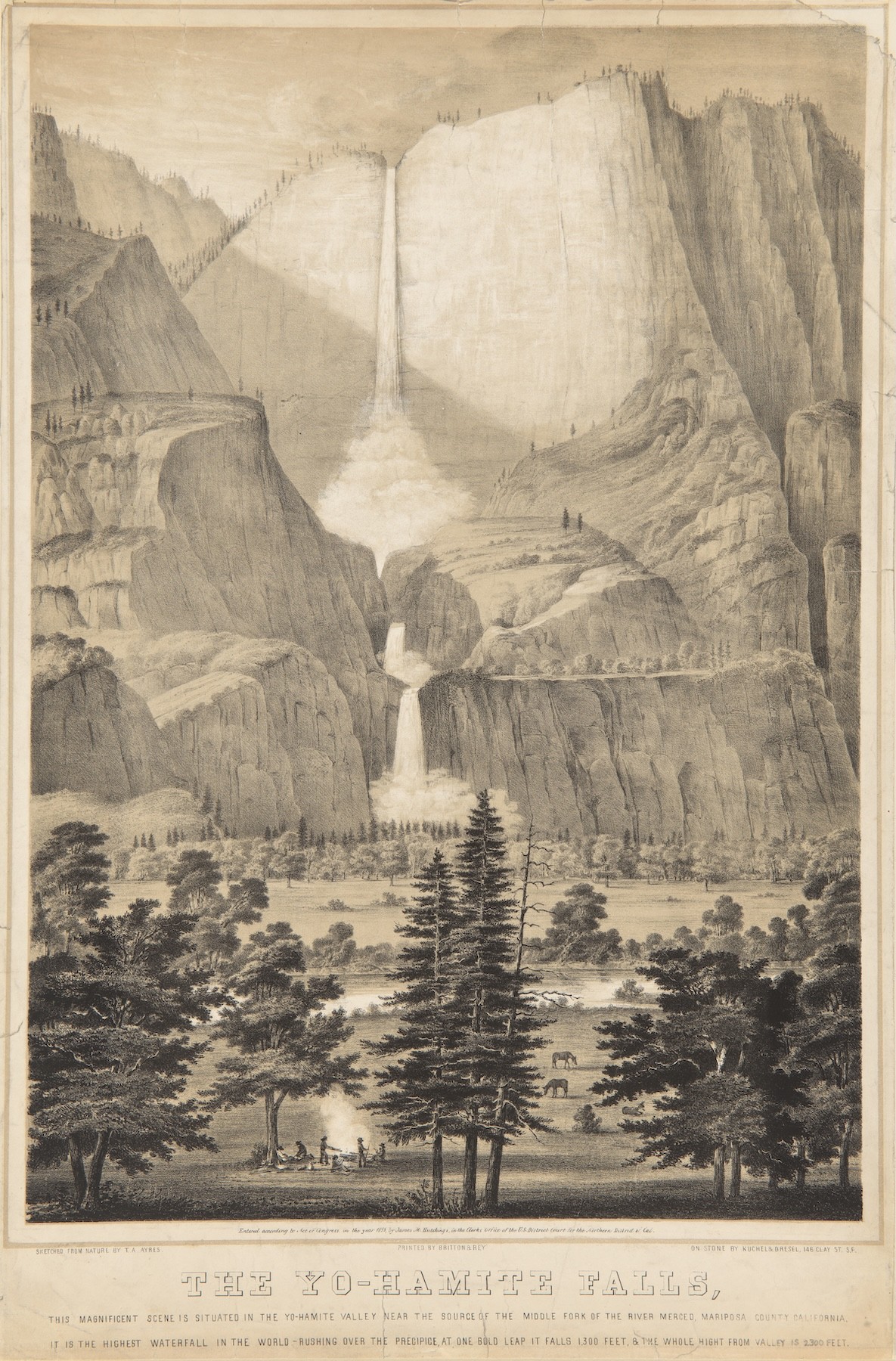the first view of Yosemite
(YOSEMITE.) Ayres, Thomas A.. The Yo-Hamite Falls, this magnificent scene is situated in the Yo-Hamite Valley …
San Francisco: James M. Hutchings, printed by Britton & Rey, on stone by Kuchel & Dresel, 146 Clay St. S.F., 1855
Lithograph. Image: 19 7/8 x 13 ¾ in. Sheet: 22 ¾ x 15 ¼ in. Mounted, some short closed tears at edge. Minor restoration. Very good condition.
This iconic American view, the first published view of Yosemite, introduced the American public to the wonders of the Yosemite Valley.
Thomas A. Ayres came to San Francisco during the Gold Rush in August 1849 and made drawings in the mines and elsewhere in California. In June 1855 Ayres accompanied James M. Hutchings, Walter Millard, and their two native guides to follow up on stories of a 1000-foot waterfall in the Yosemite Valley. The party spent four days in the area, and Ayres drew several images, including the sketch that was the basis for the present lithograph. Ayres’s drawings, “made on the spot, have artistic merit and place Ayres in the front rank of draftsmen of the period” (Peters, California on Stone).
In this magnificent view the trees and cliffs guide our eyes to the spectacular Yosemite Falls. On the valley floor we see the artist, his companions, and their horses near the Merced River. “The figures of the men and horses–and even the gigantic evergreens of the area–serve an artistic purpose in indicating the overpowering scale of the granite cliffs” (Deak, Picturing America 701).
Hutchings paid $300 for an edition of two hundred copies, and they appeared for sale in October 1855 priced at $2.50. A few copies preserve a heading stating “Hutchings’ Panoramic Scenes in California” in the otherwise blank upper margin. This copy, as is usual, does not have that upper margin series title.
Hutchings explained his use of the name Yo-Hamite in an article published the following year: “Yosemite should have its proper Indian name. … Mr. Hunt informed me that Major James D. Savage—the first white man who ever entered the Valley, and who visited it several times—always called it by that name.” Hutchings soon relented and adopted the present name. A later state of the lithograph is titled “Yo-Semite Falls.”
RARE. Kruska observes, “Whatever the original number of prints issued by Hutchings’s lithographers, very few have survived. A survey of library holdings, auction records, and private collections turned up about fifteen examples of this rare lithograph” (Kruska, James Mason Hutchings of Yo Semite, p. 201). We found no examples in the auction records apart from the example sold by Anderson Galleries in March 1921.
This is a lovely copy of one of the most famous images of the American West and the greatest printed object in all of all Yosemite iconography.
References: Kruska, Thomas Almond Ayres, pp. 11-17, item A. Kruska, James Mason Hutchings of Yo Semite, plate 22. Peters, California on Stone, pp. 45-46. Deak, Picturing America 701
$25,000



